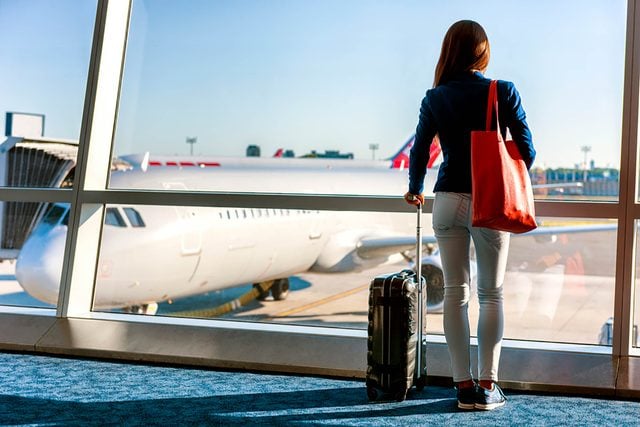How Exactly Do Standby Flights Work?
Updated: Feb. 15, 2023
Flying standby isn’t what it used to be, but it’s not impossible.

Airports and airline procedures have changed a lot even in just the last few decades. Boarding passes have, for the most part, gone digital. Security measures have become more strict; in fact, some seemingly harmless behaviors can now get you flagged by the TSA. And standby flights just aren’t what they used to be.
Back in the day, flying standby was the cheap way to go anywhere, anytime. You could go to the airport, buy an extremely discounted ticket for the next available flight to your destination, and wait. Granted, the wait could be hours long, but in the end, you could get a last-minute flight for a less-than-normal cost.
That’s all changed now, partly due to security concerns and partly because now airlines use algorithms to fill each flight as close to capacity as possible. The odds of booking a last-minute flight are slim, and that ticket will never be a bargain deal. If discounts are what you’re after, this is the best day of the week to buy plane tickets.
When to fly a standby flight
Flying standby is still possible today, just not in the way it once was. Generally, you can fly “standby” if you’ve already bought a ticket and …
- Your original flight was canceled
- You were involuntarily bumped from your original flight
- You want to take an earlier flight with the same itinerary (from the same origin airport to the same destination airport)
- You want to take a later flight with the same itinerary
- You missed your flight. This only applies to certain cases, like if you missed a connection or there were circumstances beyond your control.
No standby seat is guaranteed—hence, the name “standby”—but there are certain ways you can increase your chances. You first need to request standby as soon as possible, since airlines typically prioritize standby fliers on a first-come-first-served basis. Your best bet for the quickest response is calling a customer service number. Waiting in line to talk to a gate agent in person only bumps you further back on the standby list.
Then make a mad dash to the gate for your standby flight. If a gate agent calls your name and you don’t respond right away, she’ll move on to the next flier, no questions asked. If it’s possible, only travel with a carry-on. Some airlines won’t let you fly standby if you already checked a bag.
Unlike the standby tickets of old, requesting standby nowadays usually comes with an added fee in addition to the price of your original ticket. Airlines that do offer a free standby option generally reserve that convenience for elite fliers and loyalty program members.
How much will a standby flight cost?
Each airline has its own standby programs available for customers, but here’s the Reader’s Digest version:
Alaska Airlines and JetBlue offer free same-day standby to any passenger when traveling to select cities.
American Airlines, Delta, Frontier, and United offer complimentary same-day standby to high-tiered members in their respective loyalty or frequent flyer rewards programs. American Airlines and Delta charge a $75 fee for standby flights for other passengers. United fees may be as high as $75 and basic economy tickets are not eligible for standby and Frontier charges a $99 fee for standby flights for other passengers.
Southwest passengers who paid Business Select or Anytime fares can fly standby “for free,” only paying applicable taxes and fees. Those who paid Wanna Get Away and Senior fares must upgrade to an Anytime ticket to be eligible for standby.
Spirit charges $99 for anyone wishing to take a standby flight.
But before you chose standby, be sure to take into account the 8 secrets that airline gate agents won’t tell you; you may be able to score an even better deal. Safe travels!